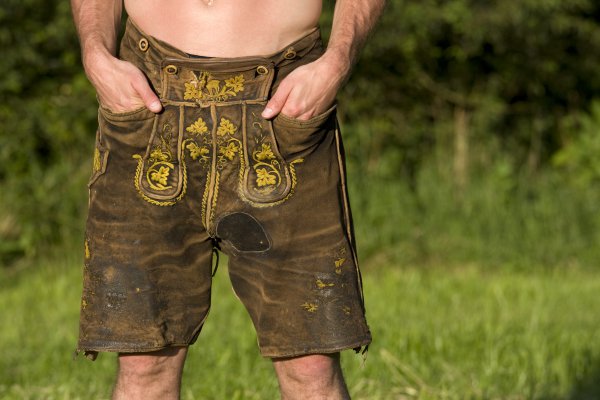Bavarian Traditions
Wiesn
The Wiesn is the traditional German name for the Oktoberfest that is used by the locals. It’s the colloquial name for the Theresienwiese, the place, where the Oktoberfest takes place.
Lederhosen
The Lederhosen are breeches made of leather. They are part of the traditional Bavarian costume but are also worn in some parts of Austria and Southern Tirol (Italy).
There are two basic versions of Lederhosen. One kind is rather short while the so called Kniebundhose, which is a longer version, also covers the knee. Typically both types of Lederhosen include embroideries as well as suspenders. In urban areas people nowadays hardly ever wear Lederhosen except for traditional celebrations like the Oktoberfest or the Starkbierfest. Within the last decade it has become really trendy to wear Lederhosen to these occasions and most natives as well as many tourists wear Lederhosen during these days. In rural areas, Lederhosen are also worn for other celebrations like weddings.
Dirndl
The Dirndl is the traditional Bavarian and Austrian dress for women. Depending on where the bow of the Dirndl is situated you can tell the personal status of the woman. If the bow is tied on the right side, the woman is signaling that she is in a relationship, engaged or married. A tie on the left side, on the contrary, means that she is single, while a tie on the back indicates that she is widowed and a tie in the middle shows that she is a virgin.
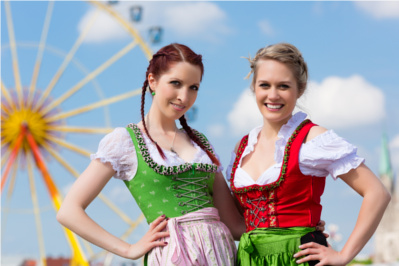
Maß
A Maß (engl.: measure) is a traditional measure for beer in Bavaria. A Maß contains one liter of beer. On the Oktoberfest a Maß is the only size of beer you can order.
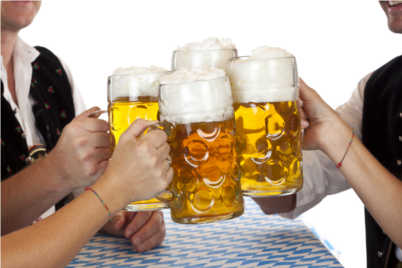
Schuhplattler
The Schuhplattler is a traditional Bavarian and Austrian folk dance performed by male dancers. Characteristically they will rhythmically strike their thighs, knees and soles, clap their hands, and stamp with their feet.
Theresienwiese
At the Theresienwiese the Oktoberfest takes place. It is 420,000 square metres (4,500,000 sq ft) of size. In the west is the Bavaria, a statue of the female symbolic figure of Bavaria, situated.
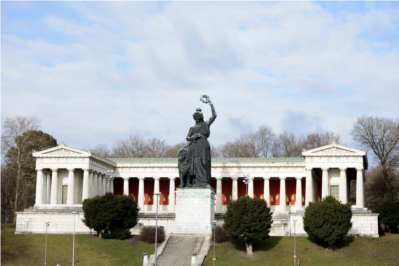
Schnupftabak/Wiesnkoks
Traditionally a lot of people do snuff on the Oktoberfest. In addition, the so called Wiesnkoks (engl: Oktoberfest cocaine) became popular within the last few years. Besides the look, it doesn’t have anything in common with cocaine, but is only a mixture of dextrose and menthol, which is supposed to refresh the person sniffing it.
Weißwurst
The Weißwurst (pl.: Weißwürste; engl.: white sausage) is a traditional Bavarian sausage made from very finely minced veal and fresh pork back bacon. It is usually flavoured with parsley, lemon, mace, onions, ginger, and cardamom, although there are some variations. Then the mixture is stuffed into fresh, clean pork casings and separated into individual sausages measuring about ten to twelve centimeters in length and about two centimeters in thickness. Traditionally the white sausage is only to be eaten until noon. This tradition originates from a time before the electric refrigerator. Back then the sausages had to be eaten until noon, before they turned bad. Also today Weißwürste at the Oktoberfest are also only sold until 1 pm.
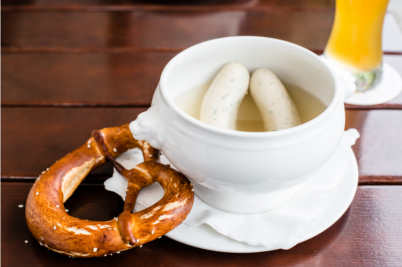
Lebkuchenherz
The “Lebkuchenherz” is a heart-shaped gingerbread, which is sold everywhere on the Oktoberfest. The icing on the “Lebkuchenherz” can spell different messages such as “I really like you”, “You are so sweet” or “You mean the world to me”.
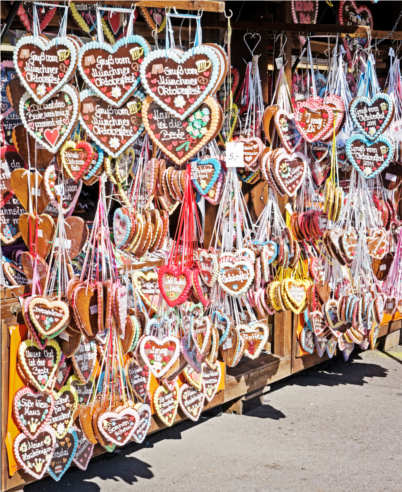
Wiesnbedienung
Wiesnbedienungen (pl.) are the waiters and waitresses that work at the Oktoberfest. They are well known for their ability to carry many Maß of beer. During the time of the Oktoberfest a Wiesnbedienung can earn up to 15.000 € (?US $ 20,400) in 16 days. Most people working at the Oktoberfest do this next to their regular job and take the two weeks off to work at the Oktoberfest.
Einzug der Festwirte
On the first Saturday all beer-tend operators march to their tents in a grand parade. In this parade also all breweries, traditional costume clubs and the brass bands that perform in the tents take part. Only when all operators arrive at their tents and the major of Munich taps the first beer keg, beer is served. This happens at noon. From 9, when the tents open, until noon only non-alcoholic beverages are served on the first day.
Oktoberfest – Numbers and facts
- 14 large and 21 small tents offer 107.000 seats
- Regularly the Oktoberfest lasts 16 days, starting on a Saturday in Septmeber and ending on the first Sunday in October
- The Hofbräuzelt, which is the biggest tent, offers 11.000 seats including the Biergarten
- About 12.000 People work on the Oktoberfest
- 6,4 milllion people visited the Oktoberfest in 2013…
- … and drank 6,7 million liters of beer (down from 7,4 million in 2012)
- The Oktoberfest was first celebrated in 1810 to celebrate the marriage of King Ludwig I and Princess Therese von Sachsen-Hildenburghausen
- 19% of the people visiting the Oktoberfest are foreigners
- On average every visitor spends 63 € (?US $ 86) at the Oktoberfest
- A Maß beer costs between 9,40 € and 9,85 € (?US $ 12,90 - 13,50)
- 124.000 sausages were sold last year
- 118 bulls were eaten
- 522.000 chickens were served
- 903 tons of waste are collected during the 2 weeks
- Worldwide there are approximately 200 fests that are called Oktoberfest
